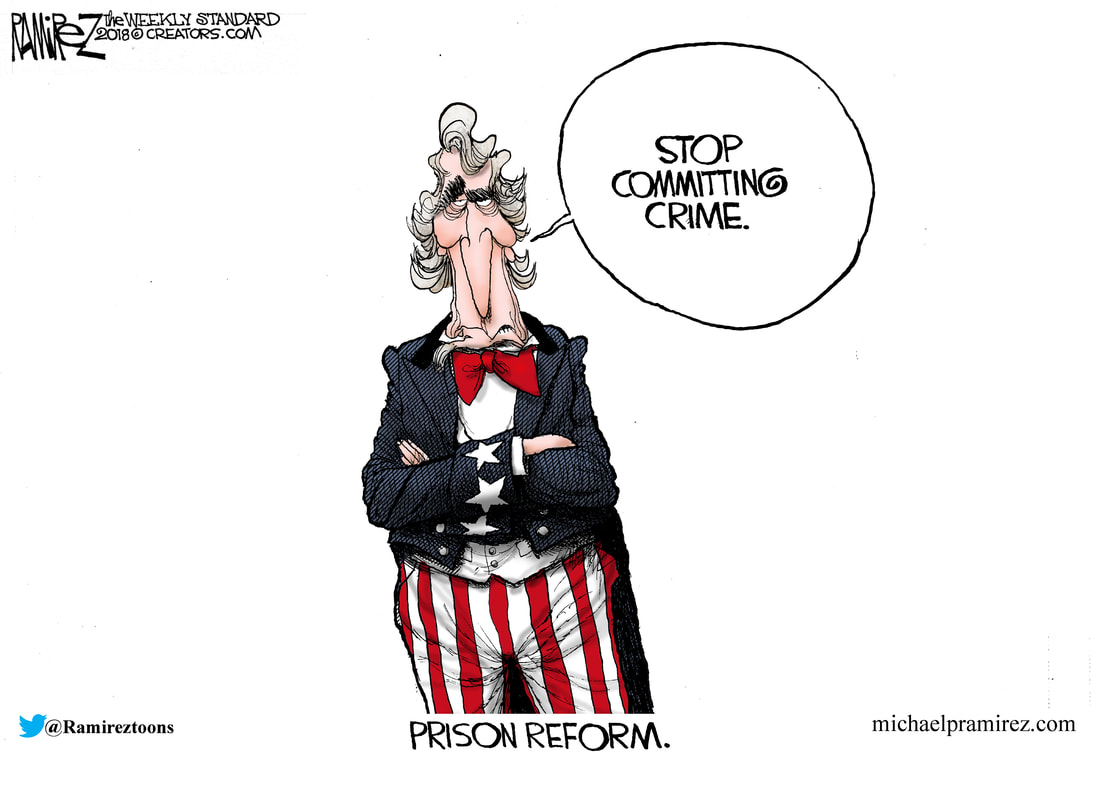Recently in Probation and Parole Category
Residents of the District of Columbia deserve protection from the most violent criminals and to be confident those offenders receive prison sentences commensurate with the gravity of their crimes. A bill pending in the D.C. Council would undermine that expectation and subject residents to unwarranted risks from convicted murderers, rapists and child sex abusers.
The legislation would directly benefit the most serious and violent criminals -- specifically, those who killed, raped or committed sexual abuse before reaching age 25 -- by making them eligible for release, or a reduced sentence, while still in their 30s.
It's important to be clear about the implication of the pending legislation, sponsored by D.C. Council member Charles Allen (D-Ward 6): Under the bill, if the gunmen who massacred innocent people in El Paso and Dayton, Ohio, this month had instead committed their crimes in the District -- and had both survived -- one would be eligible for release or reduced sentence at age 36, at a judge's discretion; the other at age 39.
A Madera County arsonist convicted of a string of fires in Yosemite Lakes Park could be eligible for parole and that has many people concerned.
Cecena was convicted of killing SDPD officer Archie Buggs in 1978, after shooting the 30-year-old officer four times during a traffic stop in Skyline before killing him with a final shot at point-blank range, according to the DA's office.
The drive to put ever more criminals and more dangerous ones on the streets gathers steam, funded by Soros money on the left and Koch money on the libertarian side, leaving relatively few defenders of the strong and sensible policies that have been a major factor in the tremendous drop in crime since the peak in the early 1990s. Senator Tom Cotton of Arkansas is one of the few, and he has this op-ed in the WSJ with the above headline.
While the House bill has some flaws, the Senate can fix them on a bipartisan basis. But under no circumstances should Congress cut mandatory minimum sentences for serious crimes or give judges more discretion to reduce those sentences. That foolish approach is not criminal-justice reform--it's a jailbreak that would endanger communities and undercut President Trump's campaign promise to restore law and order.
Fulton County Superior Court Judge Doris Downs decided last year to give Jayden Myrick ... a chance to turn his life around.
Myrick had been arrested at the age of 14 for his role in an armed robbery and agreed to a negotiated plea of 15 years, to serve seven years in adult prison, according to the Fulton County District Attorney's Office.
But after two-and-a-half years in juvenile detention, the judge gave him a break. She put Myrick on probation and placed him in a special program whose director confidently claimed her program could keep tabs on Myrick and reform him, just as it had many other violent youths, according to a transcript of the hearing.
Sounds wonderful. What could go wrong?
There isn't a woman alive who was ever raped while either intoxicated or unconscious who doesn't consider the entire experience violent.
But that's not how these crimes are defined legally in California. The same for human trafficking of a child, abducting a minor for prostitution, drive-by shootings at inhabited homes or cars, felony domestic violence, solicitation to commit murder, among others.* * *But a series of bills aiming to expand the list of crimes defined as violent died in legislative financial committees. Too expensive, was the verdict. That was the reason given when the Assembly Appropriations Committee just about one year ago killed a bipartisan measure aiming to classify all rapes and all human trafficking as violent.
The results of the study should deter the Senate from embracing the FIRST STEP legislation passed by the House just before the BJS figures were published. Indeed, the BJS numbers undermine FIRST STEP in multiple ways.
Violent crime in Santa Monica jumped almost 50 percent in 2017 over the previous year, reaching its highest level in two decades, according to police and Federal Bureau of Investigation (FBI) statistics.Data released by the City showed a total of 705 violent crimes in Santa Monica, or 230 more incidents than the 475 reported in 2016 -- a 48 percent increase.
Behind the big jump in violent crimes was a rocketing number of aggravated assaults, the City's data showed. Those crimes increased 67 percent, from 244 incidents in 2016 to 407 reported occurrences last year.
Last year also marked the third year in a row of increases in violent crime, which also includes robbery (up 28 percent from 2016, or 241 incidents), rape (up from 40 in 2016 to 57 in 2017) and homicide (one incident in 2016 and two in 2017).
* * *
As with law enforcement throughout California, Santa Monica police blame much the rise in crime on two statewide measures approved by voters over the past four years.

